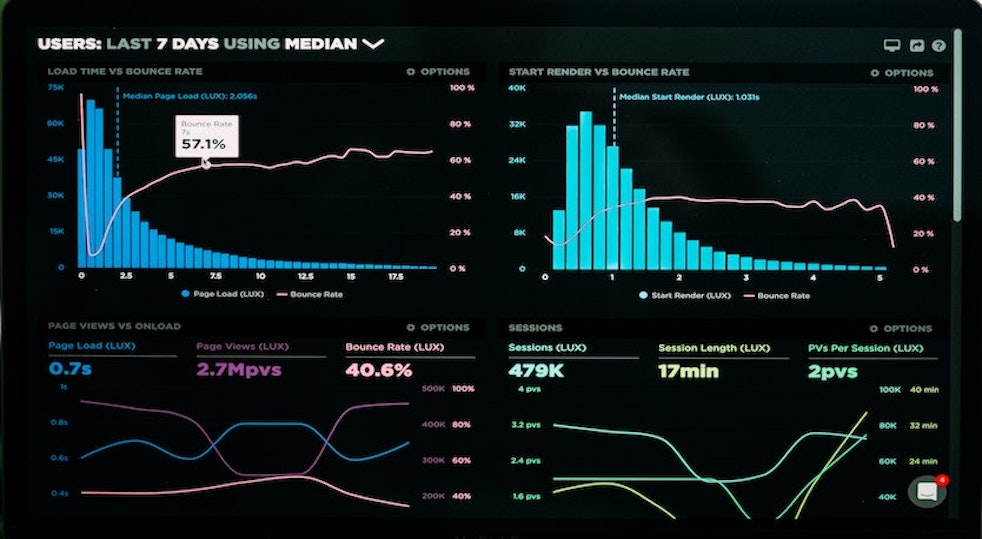To complement our series of QuickReads covering measurement, we will now explore the various data…
Continuous improvement: A day in the life…
Julie arrived at work still thinking about the radio interview she just heard in the car. A representative from the Cabinet Office was talking about a new initiative trying to encourage every government department to use new working methods that will help to constantly improve their services; he called it ‘continuous improvement’. She was wondering what it was? How it works? What it would look and feel like? How she could use it in her department?
She walked into her office, hung up her coat and went out to talk to her team as she liked to switch on her staff before her laptop, after all leadership is about inspiring people not answering e-mails. After a quick stand-up meeting with her Team Managers where they briefed her quickly about their performances yesterday and highlighted any issues forecast today she reminded them that she would be dropping into a few of their team huddles to see how things were going, give feedback and check how the recent workplace improvement initiatives were going using 5S. They were sorting out their clutter, setting the best place for everything, shining the workplace back to a pristine condition, standardizing their office to be obvious for all to use and looking at sustaining the progress with visual standards and check sheets.
Her managers went back to their teams and the pace of the day grew as staff arrived for work. They updated their workflow and activity boards with today’s target work volumes on their team boards. These had been working well to get them out of their recent backlogs, keeping them on top of their work and engaging their staff in taking an interest in their team’s performance. Some members of staff had even offered to update the boards during the day and others stood in for their Team Manager to run their 10 minute, daily huddles whilst they attended meetings or were away at rapid improvement events. This visual way of managing was really helping focus the team on improving a new set of measures based on the quality, cost and delivery of their service balanced with the safety and morale of their staff. Not the old way of focusing just on hard measures like cost and productivity.
The change in ownership and accountability was starting to take effect since they had moved away from a focus on individual measures to reduce the blame culture they’d created. They now engaged their people in sharing best practice by instead measuring and reporting the team’s performance (one-to-one’s still used individual measures but more for constructive self-development). Staff had stopped cherry picking, dropping customer calls, passing on poor quality to hit their numbers, working up to fixed expectations, hoarding good practices and working against each other. Consequently morale had improved. As Julie logged onto her computer she noticed the quote on the department vision poster ‘people are our greatest asset’ and thought to herself how they were now freeing their staff from the shackles of command and control management so they could truly think at work and be creative in fixing their own processes. They were removing the things that get in the way of delivering excellent service and value-for-money for their customers.
Still plenty of e-mails for her to deal with, but since her initiative to reduce the level by removing the use of distribution lists, agreeing guidelines for what e-mail should be used for and banning the unthinking use of CC. People were now talking face-to-face more to resolve complex problems quicker and with better solutions since stopping the tennis-like batting of one-way communications about problems from one department to another. ‘I’ll answer them later when I’ve visited my people’ she thought and went out to where the real work happens.
Grabbing a cup of coffee she wandered past the central ‘Ideas & problem solving board’ and noticed lots of new suggestions on how to improve customer service, which was this week’s theme to focus the ideas generated. She particularly liked the proposal to ask every customer the question ‘how could we improve our service to you and reduce the level of effort you needed to use our services today?’ She thought the real Voice of the Customer might get heard rather than the old method of pushing customers into their automated questionnaire system which only allowed narrow responses to questions worded in such a way that they gathered partial or limited feedback. Plus most customers hung-up before answering! A previous suggestion to advise customers, during the recorded welcome message, when were the quietest periods of the week to visit was also working to smooth demand.
Her talk on the principles of Lean Consumption in service operations and how to improve the consumer’s experience by ‘walking a mile in their shoes’ was obviously resonating with staff. They were now looking at how to solve the customer’s problems completely at the first point of contact, how to reduce delays, how they can provide what customers want, where they want it and when they want it and how to reduce the number of decisions they need to make along with providing clearer communications to reduce unnecessary queries.
On the ‘Bug board’ next door there we also lots of ideas on reducing complaints and making the processes better and less costly. They also all came from the staff. Her Team Managers only had to review, respond and record the progress towards completion now as the staff owned the implementation of ideas until they were fully embedded. This (along with fewer e-mails) all freed up the Team Managers to be doing what they should be doing and enjoyed doing ….coaching their staff in performance improvement. They were using the ‘one best way’ principle that there is only one ideal way to do something well. This allowed them to capture their best practices into standard operating procedures and user guides so the knowledge wasn’t stuck in people’s heads, variability was reduced, productivity of everyone was improved and knowledge could be shared through training and innovations built upon in weekly team-based problem solving sessions. They were spending up to 30% of their time coaching now and providing instant feedback after calls; no call recording, tape reviewing, quality scoring and feedback processes, just an instant, short feedback loop. The staff loved the change of emphasis to ‘live’ coaching and preventing mistakes rather than checking for errors well after they happened and trying to put them right by compensating customers. Again costly.
As she wandered through the back office area into the telephony center she noticed all the team boards were showing an instant snapshot of performance. One team were showing they might not get as much done today as they planned due to sickness and as she was about to speak to the Team Manager two people got up from the new pilot flex-team and sat down to work in the under resourced team. No management intervention required from her, they worked it out for themselves. The new skills matrices were doing their job well in highlighting skill levels against processes and the Team Managers had embraced the training plan by using unplanned time when demand was lower than resources to train their people to a higher skill level or seek multi-disciplined staff members for flexible working during peaks.
Although some of the worst peaks had dropped now that they understood their demand profile and had worked out nearly 30% of it was failure demand. Something they could fix by being better further up the process, setting customer expectations of when responses would be received and focusing on the true root cause of complaints not just resolving them to meet the process driven regulatory timelines. Now the Team Managers were taking time to understand problems fully before jumping to action. They were using process maps to understand their value stream and identify the seven process and consumer wastes for elimination. This combined with a simple cause and effect diagram and the five whys technique (learnt from her five year-old son’s inquisitive nature) meant they now got to the real root-cause of a problem or complaint. They then gathered some facts (not guesses) and using this data they brainstormed as many solutions they could think of before finally plotting them on a matrix showing the ease of implementation versus impact on benefits. They could then see those ideas that would work instantly and pass the more complex, but longer term solutions to the Change Management team. Who were now much more involved in improving the bigger picture rather than trying to solve local problems on processes they knew nothing about. These were fixed by the people working the process now.
Arriving at the new blended team she noticed how well the pilot was working to combine telephony, back office and support functions together into pods (cells seemed a bit too much like manufacturing terminology). They had cleared more items of work in the end-to-end process than all the functional teams could achieve in the same time, with great quality scores and better customer effort responses. They seemed to like working together that way, they shared best practices, fed-back quality problems quicker, supported each other in achieving the output and helped bring the new trainees up to speed quicker by mixing them in amongst the more experienced staff. She wondered why more people didn’t use this approach instead of large processing factories made up of people with similar skills. After all you wouldn’t send a football team onto the pitch with 11 defenders.
The meeting she had planned for later was with the Facilities Team who was helping her plan the desk moves and telephone hunt-group re-assignments so that the blended team had a fully flexible workflow capability. Once Facilities were engaged early on in what her team was trying to do to improve the processes they came up with lots of ways to make it better still. They used a simple floor-plan to work out all the journeys that the staff and the work had to make during the end-to-end process. These spaghetti-like paths helped them design the best layout for the pod to reduce the unnecessary waste of transporting work around and staff moving about during their processing.
As she walked on she bumped into her boss, Jane the Head of Function.
‘Hi Jane have you heard of Kaizen?’
‘Yes it’s Japanese for ‘making things better’ that’s what continuous improvement is all about, seeking perfection’
‘Do you think we need to be doing it?’
‘I think you already are?’ and she walked on smiling.
Is this a typical day-in-the-life of your organisation? If not then ChangeWise can help. Visit www.changewise.co.uk to find out more or call Mike Williams on (02380) 464 153 or (07866) 537 580.



